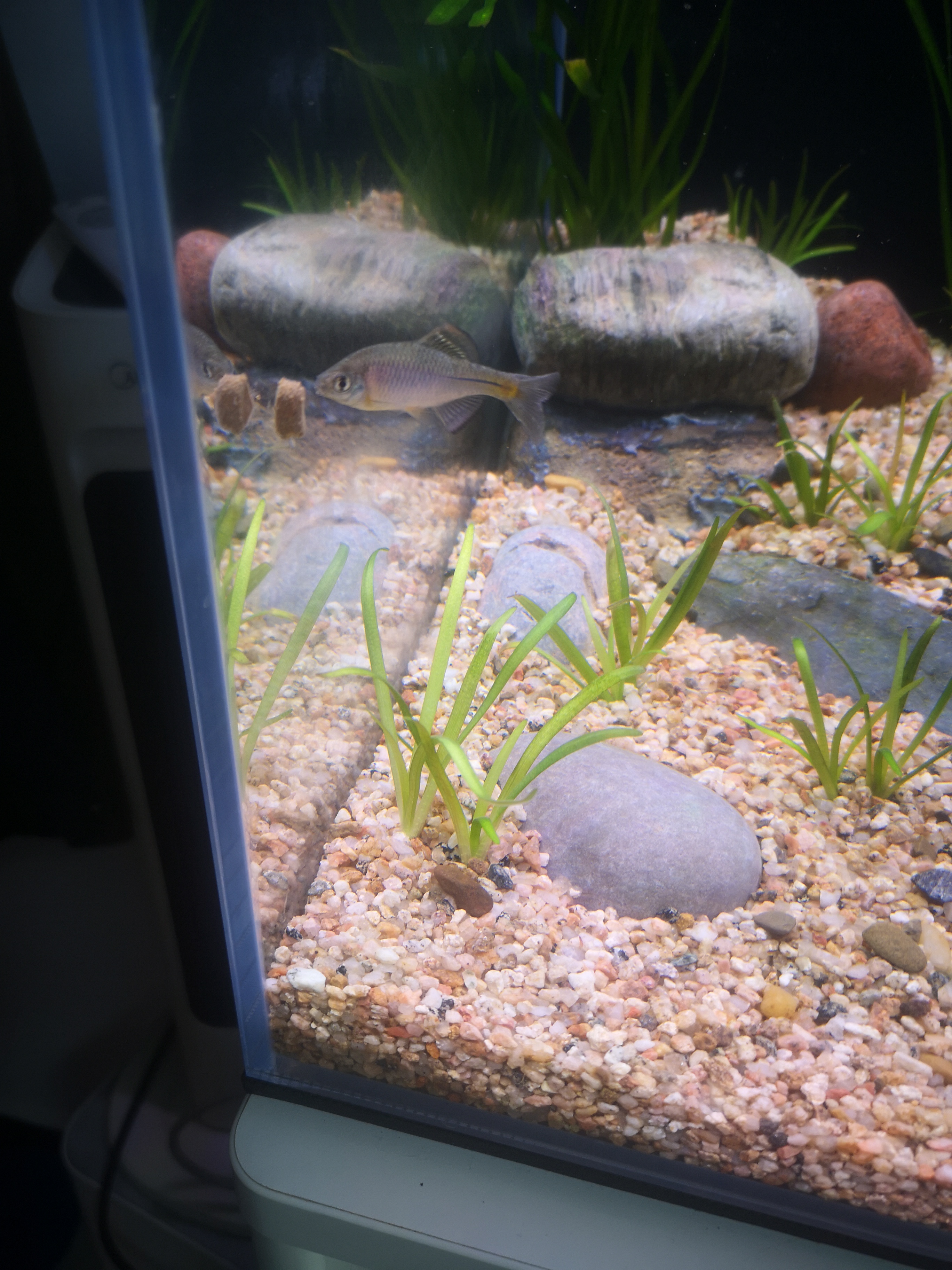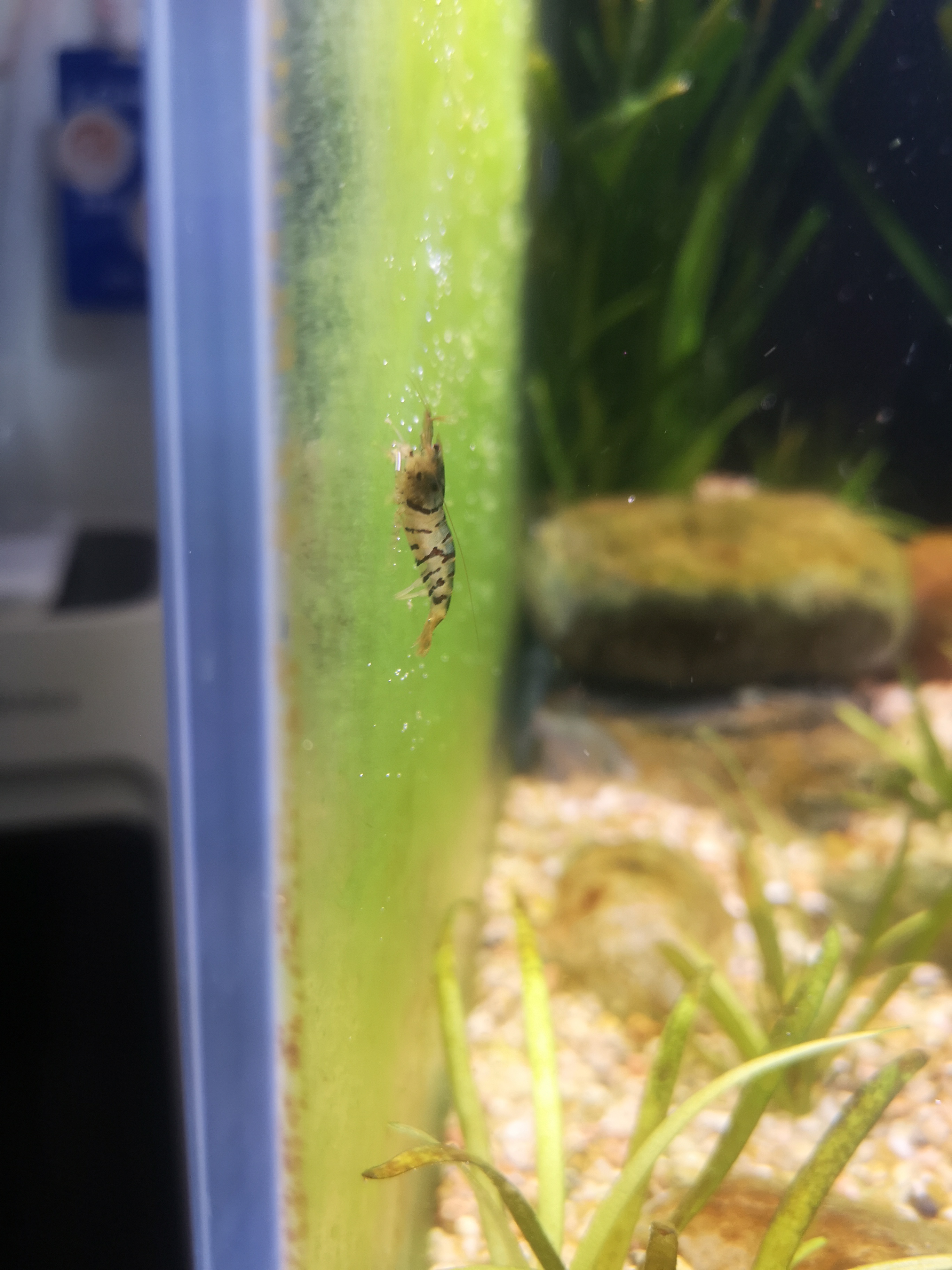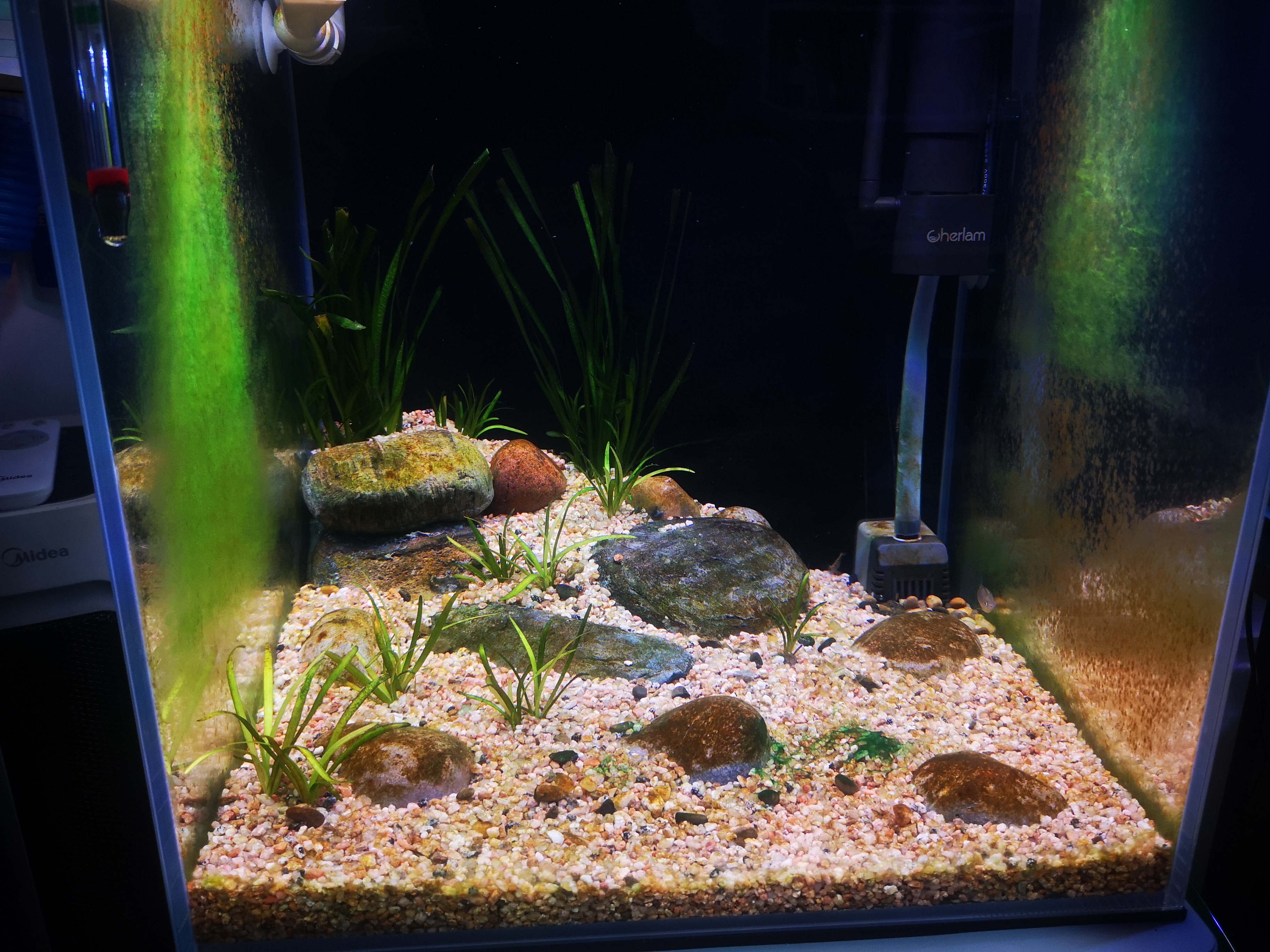Before Adding Fish
Establishing Nitrification System.
Like all aquarium tanks, a well-functioning nitrification system is necessary. It can decompose toxin like NH3/NH4 and NO2-. Normally, we need to put a few fish and wait for several weeks. However, I took another step and shortened this time to only a few days.
I just washed a old filter cotton from another tank in my new tank. The organic debris along with nitrification bacteria are released to the water, then the bacteria just settled on the filter material, decomposing the organic debris, and establishing a reliable nitrification system.
Introduce Creatures
Before the next step, we need some creatures. Some small shrimps (Caridina cantonensis) and two small bitterlings (Rhodeus shitaiensis) are introduced.
For one thing, both of them can provide some nutrients for nitrification bacteria and algae. For another, some bacteria will form mycoderm on the surface of stones and devices, shrimps can help cleaning them.
This is the Rhodeus shitaiensis I added, and you cannot see its nuptial coloration since it had not addapted to the new environment.

This is Caridina cantonensis, and I’m sorry that I could only find a photo two weeks after they were introduced.

Cultivating Algae
This is a unique step for tanks keeping native fish. Instead of ealimating algae and controling their growth, we need to cultivate them.
Algae play some important functions in the tank. It can absorb nutrients like NO3-, providing food for creatures, elimate the reflection of the glass, promote better coloration of fish, synthesis oxygen during daytime, and make the landscaping looks more natural.
So how do we cultivate algae? Algae’s growth requires light and nutrients. For light, I use LED light with RGB beads, providing enough red and blue lights, which are the wave length used for photosynthesis. For nutrients, creatures in the tank will provide it (I mean, things like fish dropping and remnant feed).
After two weeks, there are algae covering the wall and rocks, as shown here.

At this period, green alga and brown alga are commonly seen at the first stage, which we appreciate. It can be seen from their name that the green one on the walls is green alga and the brown one covering the stones is brown alga.
However, if you look at the center of the sand, you will see some dark green spots. They are blue-green algae, or cyanobacteria (but actually they are neither algae nor bacteria). I hate blue-green algae due to the cyanotoxin they produce, which is toxic to fish, and I will show how I clear them away in the following articles.